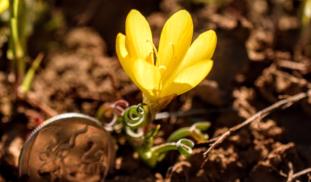Please wait...
About This Project
The Cape Floristic Region (CFR) in South Africa is one of the most plant biodiverse places on earth with over 9,000 species found in an area less than that of my home state of Wisconsin. I will generate a family tree for the genus, Geissorhiza (Iridaceae 103 sp), to assess how different ecological components of the Cape landscape have forged the spectacular flora we see today while simultaneously raising awareness for a strikingly beautiful, poorly understood, and severely threatened genus.
More Lab Notes From This Project

Browse Other Projects on Experiment
Related Projects
How do polar bears stay healthy on the world's worst diet?
Polar bears survive almost entirely on seal fat. Yet unlike humans who eat high-fat diets, polar bears never...
Uncovering hidden insect diversity associated with a likely undescribed gall-forming midge
Does a likely undescribed species of gall-forming midge (pers. comm. Ray Gagné) on Eriodictyon plants (Yerba...
Macrofungi of the California archipelago
The eight islands of the California Archipelago are a well-studied biodiversity hotspot — but we know almost...





